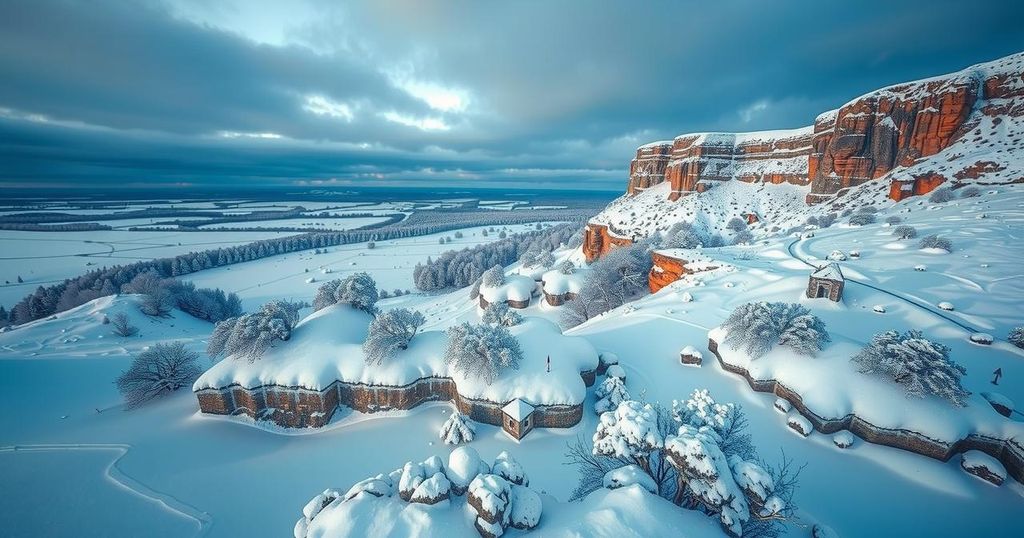Snowfall in Africa, while uncommon, occurs in specific high-altitude regions across seven countries: South Africa, Morocco, Lesotho, Tanzania, Uganda, Algeria, and Ethiopia. These areas demonstrate a diverse climatic landscape that contradicts common perceptions of the continent, offering unique experiences and attracting adventurers and nature enthusiasts.
Snowfall within the African continent is an unexpected phenomenon, often overshadowed by the warm climatic perceptions associated with the region. Nonetheless, several countries in Africa experience snowfall, primarily due to their geographical elevations and unique topographical features. In these specific areas, winter months transform the landscapes into picturesque terrains blanketed in snow, compelling adventurers and nature enthusiasts to explore these unusual environments. This occurrence highlights the diverse climatic conditions that can exist concurrently across Africa, countering common misconceptions and illustrating the continent’s rich variety of natural settings. Below is a compilation of seven nations in Africa where snow is a notable occurrence: 1. South Africa: While predominantly recognized for its temperate and warm climate, certain regions in South Africa, such as parts of Gauteng, Johannesburg, the Drakensberg Mountains, and the Western Cape, experience snowfall during winter. These specific areas are occasionally transformed into icy scenes, contrasting with the overall climate of the country. 2. Morocco: This nation is celebrated for its diverse geographical features, with regions like the Atlas Mountains being key locations for snowfall. The High Atlas and Middle Atlas ranges regularly receive snow in the winter months. The town of Ifrane, often referred to as ‘Switzerland of Morocco’ boasts charming architecture against its winter backdrop, attracting numerous visitors during the snowy season. 3. Lesotho: Nestled in southern Africa and entirely situated over 1,000 meters above sea level, Lesotho experiences snowfall mainly during the winter months of June to August. This unique high-altitude environment allows for the occasional winter wonderland, enchantingly transforming the landscape for locals and tourists alike. 4. Tanzania: The highest peak on the continent, Mt. Kilimanjaro, primarily experiences snowfall. The summit of Kilimanjaro encounters arctic conditions, particularly during the dry season from June to October. Heavy snowfalls typically occur in December, while the coldest temperatures are registered between June and August, enticing climbers eager to experience its unusual climate. 5. Uganda: Snow is primarily found in Uganda on the peaks of the Rwenzori Mountains, which often remain shrouded in snow and glaciers. This stunning feature presents a striking visual contrast against the landscape, attracting adventurous travelers who wish to hike to its peaks or enjoy views of the snow-capped mountains from lower altitudes. 6. Algeria: Although Algeria generally possesses an arid climate, the Tell Atlas features regions that receive snowfall during winter. Notably, higher altitudes in northern mountainous areas, such as the Kabylie and Aurès Mountains, see limited snow, providing a momentary shift from the predominant dry climate for local residents. 7. Ethiopia: Characterized by its distinctive terrains, Ethiopia features regions where snowfall can occur. The Simien Mountains, a UNESCO World Heritage Site, exceed altitudes of 4,500 meters above sea level, representing one of the few locations in Ethiopia to experience snow. Such phenomena attract hikers and explorers keen to witness the unique landscapes.
The occurrence of snow in Africa challenges pervasive notions about the continent’s climatic conditions. While much of Africa is recognized for its hot and dry environments, certain high-altitude regions facilitate snow formation, particularly during winter months. This article explores the seven nations within Africa that experience snowfall, highlighting the geographical and climatic factors that contribute to this intriguing phenomenon. Furthermore, it emphasizes the natural beauty and diverse ecosystems present in regions typically not associated with snow, encouraging further exploration and understanding of Africa’s ecological richness.
In conclusion, Africa’s snowy landscapes present a fascinating juxtaposition against the widespread perception of the continent as predominantly warm. The exploration of high-altitude regions in countries such as South Africa, Morocco, Lesotho, Tanzania, Uganda, Algeria, and Ethiopia reveals a surprising climatic diversity. This underlines the importance of recognizing and appreciating the varied natural environments and climatic phenomena that Africa offers, inviting both curiosity and adventure to those willing to explore beyond the conventional views of the continent.
Original Source: businessday.ng






